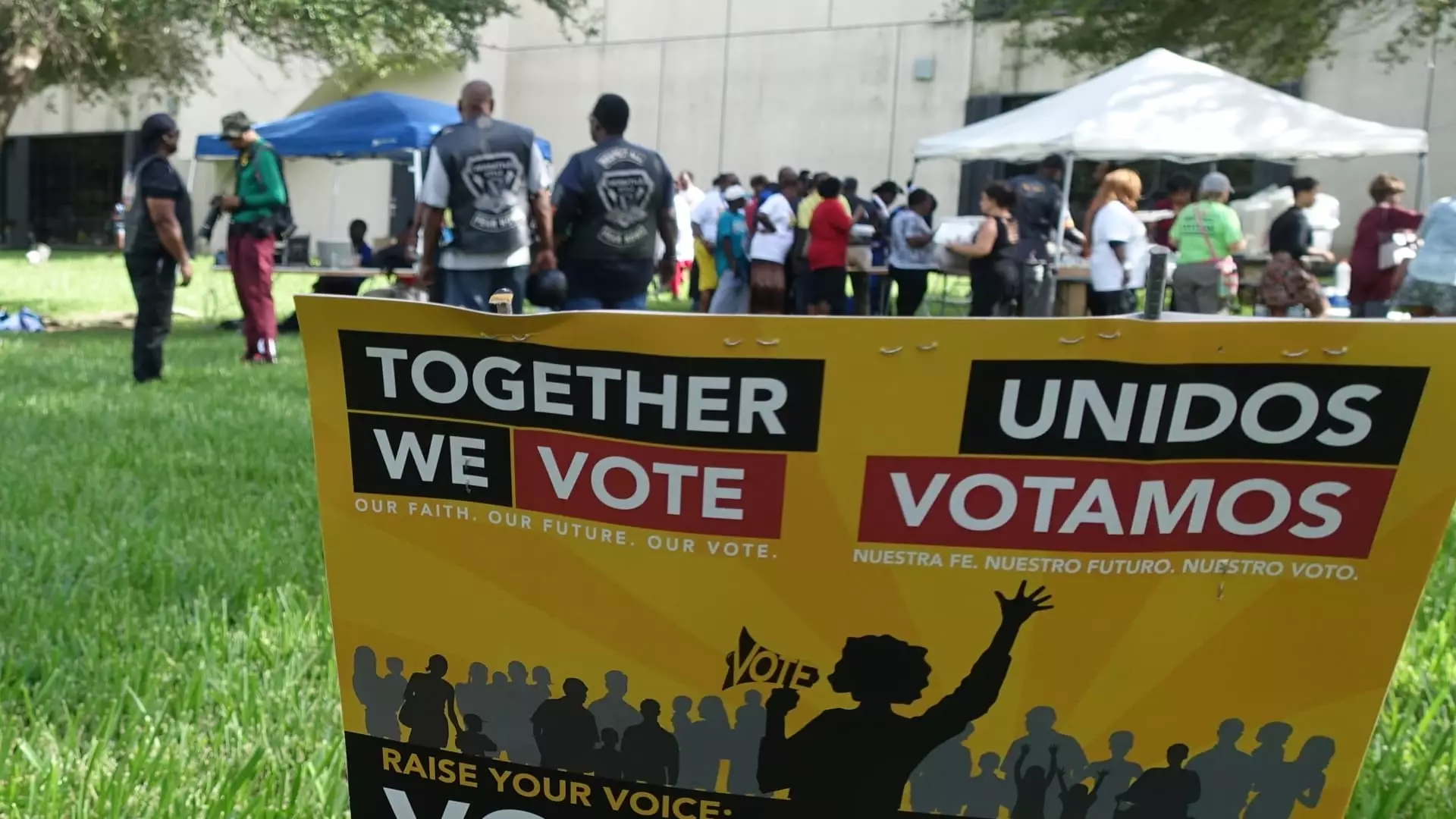As the political landscape heats up leading to the upcoming elections, the Harris campaign is making a proactive approach to connect with Latino voters—a demographic increasingly recognized for its pivotal role in electoral outcomes. With a host of engagement strategies rolled out as National Hispanic Heritage Month begins, the campaign is poised to embark on its most aggressive outreach initiative yet. The timing aligns perfectly with the early voting period in critical battleground states such as Arizona, Nevada, and Pennsylvania, where Latino populations significantly influence local and state races.
At the heart of the campaign’s strategy is a substantial financial commitment aimed at Spanish-language radio—an essential medium that resonates well with many Latino voters. With $3 million earmarked for advertising from mid-September to mid-October, the Harris team is tapping into a crucial communication channel. This period features extensive engagement with popular local sports programming, capitalizing on the cultural significance of sports within Latino communities. By aligning campaign messages with beloved sports figures and local teams, the initiative seeks to deepen its connection with undecided voters through relatable content.
Moreover, the campaign involves high-profile figures such as Vice President Kamala Harris and Minnesota Governor Tim Walz in outreach efforts. Their participation in key events, from addressing conferences to attending major sporting matches, signals a commitment to visibility within the Latino community. Notably, events like the super middleweight boxing match between Canelo Alvarez and Edgar Berlanga create unique opportunities to engage listeners and potential voters in settings where they feel at home.
Grassroots Organizing: A Community-Centric Approach
In addition to high-profile events, the campaign emphasizes grassroots organizing as a means of connecting to Latino voters on a personal level. The “Latinos con Harris-Walz” initiative exemplifies community-driven efforts. Local events, such as the collaboration with Rep. Chuy Garcia at Hispanic Heritage events linked to the Detroit Tigers, nurture a sense of community involvement. By fostering these local connections, the campaign hopes to strengthen relationships with voters while simultaneously addressing issues pertinent to the community.
Additionally, monitoring the evolving narrative surrounding misinformation in the digital space has prompted the campaign to launch a “Latinos con Harris-Walz” WhatsApp channel. This innovative approach seeks to counteract misleading narratives, thereby ensuring that accurate information reaches voters directly, leveraging family and social networks as trusted communication pathways.
The campaign is meticulously crafting messages that reflect critical issues of concern within Latino communities. From immigration reforms to economic policies, highlighting Vice President Harris’s tenure as California state attorney general in combating cartel activities offers a personalized narrative that positions her as an ally. The campaign’s strategy underscores the importance of addressing issues that directly impact Latino families, helping potential voters recognize the tangible stakes involved in casting their vote.
Moreover, prominent Latino leaders such as Secretary of Health and Human Services Xavier Becerra and Secretary of Education Miguel Cardona are also taking part in outreach events scheduled in crucial states. Their involvement conveys a message of unity and shared purpose within the Latino community, reinforcing the notion that the administration genuinely cares about addressing their concerns.
Polling Insights: Understanding Latino Preferences
Recent polling data provides a glimpse into Latino voter preferences. The findings reveal that Harris garners higher support among Spanish-speaking and bilingual households, with nearly 60% indicating their preference for her over Trump—a stark contrast compared to about 38% for Trump. This insight is invaluable, suggesting that while a significant portion of the Latino community aligns with Harris, there is still work to be done to engage English-dominant households effectively.
Additionally, the campaign’s focus on trusted communication channels, particularly within Latino networks of family and friends, indicates a strategic understanding of how information is shared among these communities. The design of tailored messages for specific audiences is a thoughtful approach that respects cultural nuances and communication styles.
Conclusion: A Critical Moment for Latino Engagement
As the Harris campaign embarks on this expansive outreach effort, it stands at a crucial juncture in appealing to Latino voters. By investing in culturally relevant communication methods, fostering grassroots connections, and effectively addressing issues pertinent to these communities, the campaign aims to secure a critical voter base. The interplay of strategic messaging, community engagement, and the combating of misinformation sets the foundation for a robust electoral strategy. Through these efforts, Harris and her team are not only emphasizing their dedication to the Latino community but also attempting to redefine the narrative leading up to the elections. Whether this ambitious plan translates into substantive voter turnout will be a focal point in the upcoming months, shaping the future of the campaign and its prospects for success.


Leave a Reply